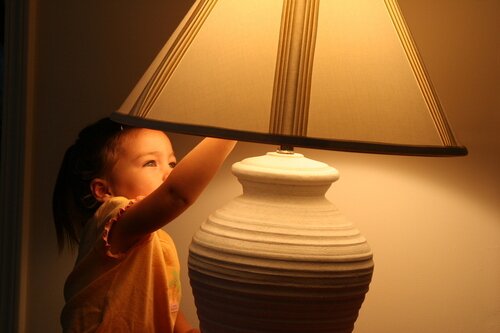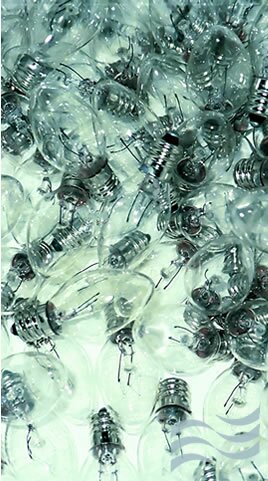Fit low energy lighting
Fit Low Energy Lighting
Switching to low energy light bulbs can save you lots of money and is an easy way to start reducing your carbon footprint.
Why Switch to Low Energy Bulbs?
Using low energy light bulbs is one of the quickest and easiest ways of reducing carbon footprints and of cashing in on the savings that follow. Thanks to the introduction of low energy lighting over the last 20 years, and the phasing out of more inefficient bulbs, the average home uses a third less electricity for lighting than it did in the late 1990s.
An energy saving bulb can save up to 170kg of CO2 and up to £60 over its lifetime when used instead of an inefficient bulb. The range of bulb styles now available makes it possible for every lighting situation to be achievable with greatly reduced energy use.
The main types of energy saving bulb available are:
- Halogens: These bulbs work in a similar way to incandescent bulbs but use up to 40% less electricity. They are often used in spotlight fittings. Although each individual bulb is more efficient, one room will often have lots of bulbs which increases the overall energy used to light a room. For this reason, and because they aren’t as efficient as other low energy bulbs such as CFLs and LEDs, halogens are being phased out. Halogen spotlights were phased out in 2016 and other halogens will follow by 2018. LEDs are a good, low energy alternative.
- CFLs: CFLs are the most common bulb in the UK today and are great for using in fittings where you would have previously put a traditional incandescent bulb. They use 75-80% less energy than traditional incandescent bulbs and last up to 10 times longer. They often have a coil or helix shape to them but are increasingly available in other styles. Traditionally criticised for taking a long time to light up, most now reach 70% of full brightness within a minute of being turned on. They are available in a variety of shapes, sizes, colours and ranges of colour rendering capacity.
- LEDs: Light emitting diodes (LEDs) are the most efficient bulbs you can buy. LED replacements are available for most light fittings, but are especially suitable for replacing spotlights and dimmable lights. more options for LED main ceiling bulb replacements are coming on to the market. They light up immediately. LEDs are much cheaper than they used to be and, because they last so long, are the cheapest option over their lifetime.
Dispelling the Myths
Currently, the key low energy lighting technology is the compact fluorescent light bulb, or CFL. However, there are a number of common complaints about CFL bulbs that many people don’t realise are no longer a problem.
- The bulbs are too large to fit in many lamp shades. Bulb shapes and sizes are now equivalent to old style incandescents. Some of these bulbs are only available on the internet, but availability on the high street is steadily improving.
- The bulbs take too long to light up. Again, this is an issue that is being addressed. Some bulbs now light up instantly, while others still take a short while, but are much quicker than previously. Work is ongoing by bulb manufacturers to constantly improve on light up times.
- The light quality isn’t as good as older incandescent bulbs. Light quality is now greatly improved, both with regards to colour and to brightness. Soft warm light colours or even daylight coloured CFL bulbs are available. Household bulbs up to the equivalent brightness of 100W incandescent bulbs are available. Even brighter CFL bulbs are also on the market, but due to their extreme light output, are better suited to outdoor use.
- You can’t get dimmable low energy light bulbs. Dimmable low energy bulbs are now available.
Phasing out old bulbs
Incandescent bulbs have not been available for sale in the UK since 2011 because they are highly inefficient, turning only 5% of the electricity they use into light. It is estimated that this has saved up to five million tonnes of CO2 a year - the equivalent of shutting down a one Giga Watt coal fired power station.
From 2017 only lightbulbs with an energy rating of B or more are available. A typical incandescent would have had an energy raring of E.
Halogens spotlights were phased out during 2016 and all halogens will be phased out by 2018.
What else can I do?
Buying the right lightbulb is only the start. The way in which you use lighting in your home can also reduce your energy bills:
- Turn off lights when you don’t need them on. If you’re leaving a room, for any amount of time, turn the lights off. Modern bulbs do not use a lot of energy to light up in the first place.
- Do you need all the lights on? For example, do you need all the lamps in a room on as well as the main lights.
- Use a sensor or timer on external lights so that they are only on when they need to be.
- Use the right kind of lighting for different tasks. For example, use a low light while watching television and a brighter, more concentrated, such as a lamp light for reading.
- Choose lampshades carefully. A dark shade can absorb some of the light from a bulb and make it feel darker. If you can, use transparent or light coloured shades. Some fittings have a reflective inside to increase efficiency (LEDs and halogens incorporate this in the bulb).
Further Information:
Energy Saving Trust
